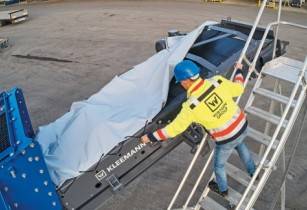Global steel demand is projected to reach 1,735 metric tonnes (mt) in 2019, up 1.3 per cent from 2018, and 1,752 mt in 2020, according to a report by the World Steel Association (worldsteel)
?In the Middle East region, steel demand is expected to contract by -2.6 per cent to 48.9 mt in 2019, with a minor recovery forecasted in 2020 with demand expected to reach 49.5 mt, a growth of 1.2 per cent,? said Saeed Ghumran Al Remeithi, CEO of Emirates Steel and chairman of the worldsteel Economic Committee.
?Economic diversification efforts in the GCC continue but fiscal consolidation is still suppressing construction activities. However, in North Africa, the situation looks brighter with Egypt recovering strongly after the structural reforms of 2017,? noted Al Remeithi.
The Turkish economy is still reacting to the currency crisis of August 2018, which led to a contraction in steel demand. This is expected to continue into 2019, with some stabilisation in 2020.
Global steel demand trends for 2019 and 2020
According to the report, Chinese steel demand continues to decelerate as the combined effect of economic rebalancing and trade tension is leading to slowing investment and sluggish manufacturing performance. In 2019, the government is likely to heighten the level of stimulus, which is expected to boost steel demand. In 2020, a minor contraction in Chinese steel demand is forecasted as the stimulus effects are expected to subside.
In 2019, the US growth pattern is expected to slow with the waning effect of fiscal stimulus and monetary policy normalisation. Therefore, both construction and manufacturing growth will moderate. Investment in oil and gas exploration is expected to decelerate as well, while a boost in infrastructure spending is not expected.
The European Union (EU) economies are also facing a deteriorating trade environment as well as uncertainty over Brexit. Slower growth in demand for steel is expected in the major EU economies, especially in those more export-dependent, in 2019. Steel demand growth is expected to improve in 2020, dependent on a reduction in trade tensions.
In Asia, steel demand in the emerging economies, excluding China, is expected to grow by 2.9 per cent and 4.6 per cent in 2019 and 2020 respectively. Steel demand in developing Asia, excluding China, is expected to grow by 6.5 per cent and 6.4 per cent in 2019 and 2020 respectively.
Indian economy is now expected to achieve faster growth starting in the second half of 2019 after the election. While the fiscal deficit might weigh on public investment to an extent, the wide range of continuing infrastructure projects is likely to support growth in steel demand above seven per cent in both 2019 and 2020.


























